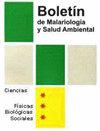阿根廷东北部城市周边住宅的土壤,如潜在人畜共患寄生虫的发展和/或感染情况
Q4 Immunology and Microbiology
引用次数: 0
摘要
在这项研究中,描述了阿根廷东北部城市周边社区和棚户区住宅中土壤寄生虫物种对家庭环境的污染,并与卫生变量相关。评估的每栋房子都被视为一个分析单元。样品采用三种不同的技术进行分析:离心沉淀;Willis Molloy浮选和使用鞘液浮选。在分析的30栋房屋中,有12栋(40.0%)在土壤样本中至少存在一种寄生虫形式。我们记录了三个分类群,其中最常见的是线虫幼虫(与钩虫有关),在30%的住宅中报告,其次是犬弓形虫和硫化旋毛虫卵,以及在3,3%的住宅中的犬细胞异孢菌卵囊。在土壤污染和卫生变量之间没有观察到统计关联(p>0.05)。这些初步结果表明,家庭环境土壤对人类,主要是幼儿及其宠物,可能具有很高的感染和再感染潜力。本文章由计算机程序翻译,如有差异,请以英文原文为准。
Soil of periurban dwellings like scenario of development and/or infection of potentially zoonotic parasites in northeast of Argentina
In this research, soil contamination in household environment with soil-borne parasites species in dwellings of a periurban neighborhood and a shantytown in northeast of Argentina was described and associated with sanitary variables. Each house evaluated was considered as a unit of analysis. The samples were analyzed under three different techniques: centrifugal sedimentation; Willis Molloy flotation and flotation with Sheather's solution. Out of the 30 houses analyzed, 12 (40.0%) presented at least one parasitic forms in soil samples. We recorded three taxa, the most prevalent were nematodes larvae (related to hookworms), reported in the 30% of dwellings followed by Toxocara canis and Trichuris vulpis eggs and Cytoisospora canis oocyst in the 3,3% of houses. No statistical association was observed between soil contamination and the sanitary variables (p > 0.05). These preliminary results demonstrate that domestic environment soil could represent a high potential for infection and re-infection for humans, principally young children and their pets.
求助全文
通过发布文献求助,成功后即可免费获取论文全文。
去求助
来源期刊

Boletin De Malariologia Y Salud Ambiental
INFECTIOUS DISEASES-PARASITOLOGY
CiteScore
0.40
自引率
0.00%
发文量
51
期刊介绍:
Information not localized
 求助内容:
求助内容: 应助结果提醒方式:
应助结果提醒方式:


